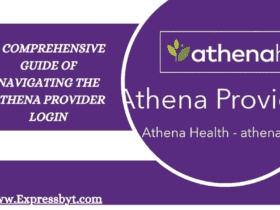Luliconazole is an antifungal component containing Azole in its structure. It is a chemical mixture belonging to an antifungal category. It is used to deal with different fungal diseases like athlete’s foot, ringworm and many others.
If you are a person looking for an effective antifungal prescription then Luliconazole would be the right option. Start reading this post till the conclusion to understand more about luliconazole and its alternatives.
What is Luliconazole Cream?
Luliconazole cream is a topical medication used to treat various fungal infections like athlete’s foot, jock itch, and ringworm. It is considered one of the most effective antifungal medications because it contains Azoles which are very effective in killing the fungus. It treats various skin infections. When it is applied topically on the effective area it works by killing the fungus. Before taking this medication be sure to consult your doctor to seek advice. It is also formulated into various formulations like topical creams and oral tablets.
Luliconazle Topical Alternatives Compared
In the market, you can various alternatives for Luliconazole including Ketoconazole, Betamethasone and Clotrimazole. In the following paragraph, I will compare all these three components to provide some brief ideas for you.
1. Luliconazole topical
Luliconazole cream is an effective medication used in the treatment of various fungal infections like Tinea Cruris, Tinea Corporis, and Tinea Pedis.
Side effects
The side effects of Luliconazole Topical include
- Hives
- Difficult breathing
- Bulging of your complexion, lips, or throat.
2. Betamethasone and Clotrimazole
Betamethasone is a Potent steroid that is used to deal with redness, Swelling and itching of the skin. Clotrimazole is an antifungal element used to deal with fungal infections. These two combinations are used to treat Tinea Cruris, Tinea Pedis, and Tinea Corporis.
Side effects
The side effects of Betamethasone and Clotrimazole include
Common side effects
- Numbness, tingling, or burning
- Skin dryness and Rashes
- Swelling
- New infections.
Serious side effects
- Worsening your skin condition
- Redness, fever, bulging, oozing, or severe resentment of any treated skin
- Clouded vision, eye discomfort, or noticing halos around lights
- Elevated blood sugar–increased thirst, increased urination, dry mouth, fruity breath odour
- weight gain
- Poor wound healing
- Thinning or discoloured skin
- Increased hair growth on the body
- Muscle weakness
- Nausea, Diarrhoea
- Tiredness, Mood swings, Menstrual irregularities, Sexual changes.
3. Ketoconazole Topical
Ketoconazole topical is also an antifungal compound used to treat Athelets foot and seborrhea and pityriasis, which causes scaly discoloured patches on the skin of the neck, chest, arms, or legs.
Side effects
The side effects of Ketoconazole include
Serious side effects
- Burning sensation, stinging, or severe irritation after using ketoconazole topical
- Redness, pain, or swelling of treated skin
- Difficulty in breathing.
Common side effects
- Hair thinning
- Differences in the colour or consistency of your hair
- Dry skin and flaky skin
- Very Mild itching.
Precautions
Before taking any of the above-mentioned creams consult your physician for a piece of advice. If you are pregnant and trying to use these topical medications seek advice from your gynaecologist to know about its side effects during pregnancy.



Leave a Reply